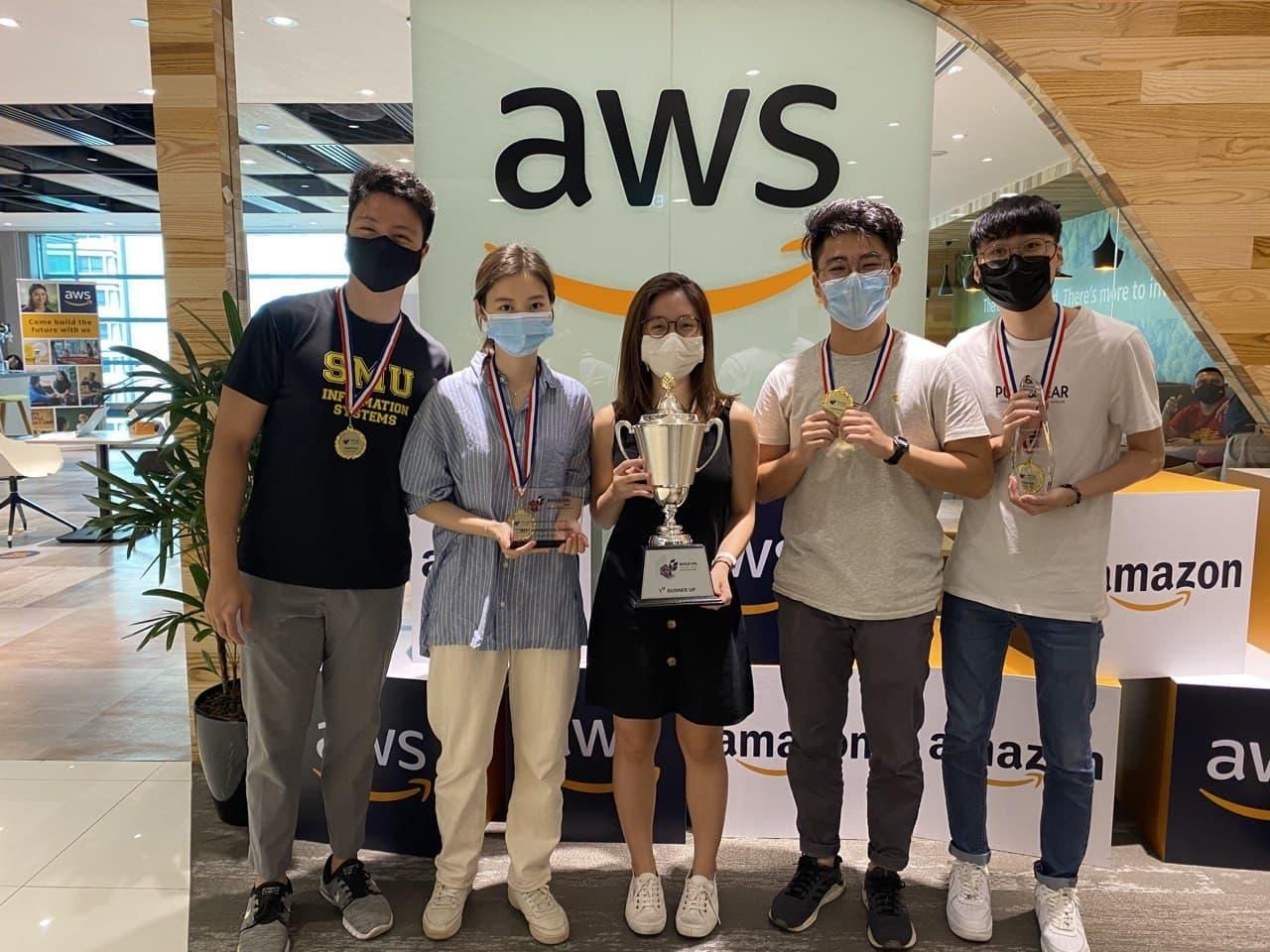
Five year-three students from the School of Computing and Information Systems have won the Build On, Singapore 2020 hackathon held in September 2020 and subsequently emerged as the first runner-up in the Build On, ASEAN 2020 hackathon in October 2020.
Organised by Amazon Web Services (AWS) and the National University of Singapore, the Build On hackathon was held virtually for the first time. The competition is open to students from vocational institutions, polytechnics and universities in Singapore, Malaysia, Thailand, Indonesia and the Philippines. It seeks to enable students to learn more about the fundamentals of cloud computing and AWS technologies, ideate and develop solutions to the real-time challenge statements provided by the participating organisations.
In the Singapore round, participating teams selected a challenge statement and developed a proposal for a solution to the challenge during the initial round. Between 40-50 teams were then selected for the next round which involved a video presentation of their proposed solution to the challenge they have selected. Six teams were eventually shortlisted for the finale round during which they presented their solution to a panel of judges. The finalists were evaluated on Innovation, Idea Concept, Technicality, Business Viability, and Presentation.
Team Bobs from SMU decided to tackle the challenge of fake news and misinformation by developing a solution to curb misinformation and make tools smarter to combat future infodemics.
The team’s proposal is centered on the idea that the best defence for misinformation over the internet is through education. Hence, its solution is a tool built to encourage education of the masses on how to be discerning readers, thereby distinguishing itself from the various fact checkers and fake news flags in the market. The team proposed an extension to major chat applications, such as WhatsApp, by incorporating two key features - an overlay to chat messages with embedded URLs highlighting key contextual information, and a double checking prompt to users when forwarding long messages.
A message showing the four key metrics - Credibility, Bias, Emotions and Popularity.
The contextual information is presented as an overlay on top of the chat message with four key metrics - Credibility, Bias, Emotions and Popularity, which were computed by retrieving information on the web and running through Artificial Intelligence algorithms. This serves as an ever-present yet subtle reminder to all readers that the context of how an article is written should always be considered together with its content when determining how trustworthy an article or a message is.
A message showing the double checking prompt.
The double checking prompt encourages users to perform double checks when they intend to forward long messages which are typically spread through group chats. This feature leverages the human’s innate ability to sieve out fake news, which has been proven by research. Overall, the solution aims to gradually incorporate contextual information and double checks in the way that information is consumed such that the general public is less dependent on tools, and more capable to innately reject misinformation when presented with them.
Team Bobs trumped the competition in the Singapore round and walked away with US$1,500 worth of Amazon devices and US$1,000 AWS credit vouchers. It also received US$250 worth of Amazon devices for winning the Best Innovation Award. The team, together with another from Singapore, then took on 12 other teams from Malaysia, Thailand, Indonesia and the Philippines in the ASEAN round. It improved the technical performance of the solution it has developed, and added more user interfaces to create a more complete product that could be used by a governing body for fake news. The team clinched the first runner-up spot and took home S$1,000 of shopping vouchers.
Sharing the team’s journey in the competition, Bao Xian said “Our team took part in the hackathon as we saw an opportunity to apply our technical knowledge to real-life problems. We wanted to solve a problem by building a relevant solution that will create an impact to society.
“As the hackathon lasted for almost two months, it overlapped with our school timetable and this pushed all of us to manage our time well. With our conflicting schedules, we had limited time to learn new technologies like Natural Language Processing (NLP) which was required in our solution. To work efficiently, we employed Agile development methods, a project management methodology, which helped us overcome the challenges and allowed us to pick up both technical and project management skills.
“Most importantly, we learnt that even the most sophisticated technology needs to be packaged and applied in innovative and feasible ways, in order to create a solution that will be truly beneficial to communities!”